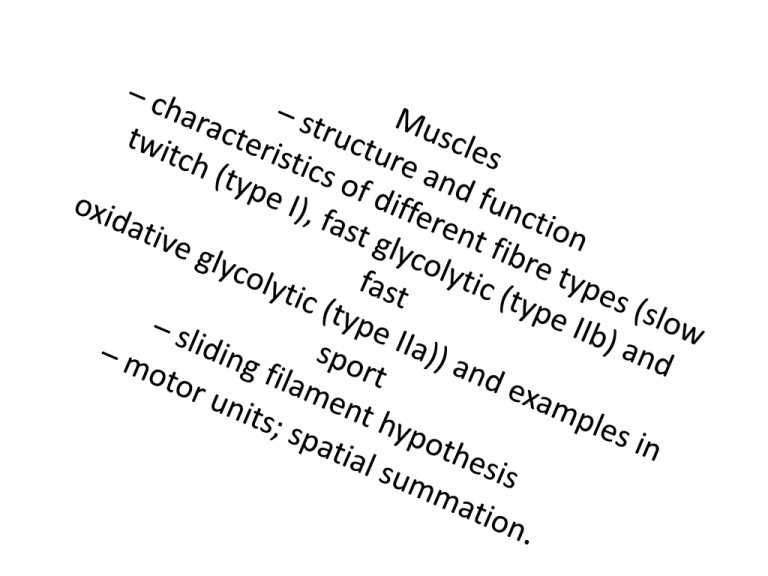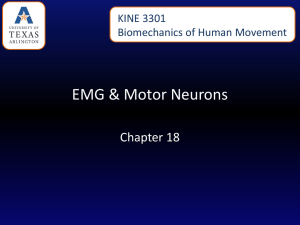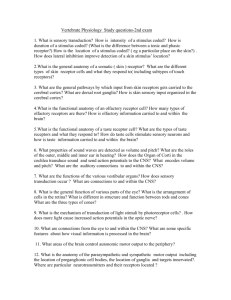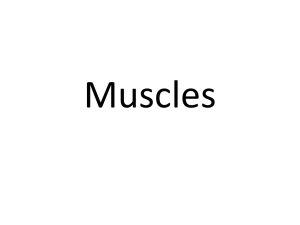MusclesRevision
advertisement

Structure and Function • • • • • • Skeletal – made up of 1000’s of fibres. Fibres bound together by connective tissue Each fibre contains: Numerous myofibrils Mitochondria Network of tubes called sarcoplasmic reticulum • Many nuclei Key Terms • Look at p.33 – copy key terms + fig 3.3 • Understand striated appearance by defining (and possibly labelling): • A bands • I bands • H zone • Z line • Sarcomere The sliding filament theory • What you need to know: Each stage of the process – Like a ‘comic strip timeline Can we do this together??????? Different Types of Muscle Fibres • Two major types – Slow Twitch (ST) Fast Twitch (FT) • What you need to know: • The differences between the 2…. • Complete the table on p.37 Different Types of FT Fibre • What you need to know: • Type Iia (FOG) – fast contraction, large force, fatigues easily • Type iib (FG) – very fast contractions, very large forces, fatigues very easily • What sports use both? Motor Units and Spatial Summation Motor unit – a motor neurone and its muscle fibres All or nothing law – muscle fibres either contract or do not contract – no such things as a partial contraction Spatial Summation Although the response of a motor unit is all or nothing, the strength of the response of the entire muscle is determined by the number of motor units activated, and the size of the units involved. Spatial Summation • In order to achieve a greater force of contraction, the brain recruits / tells more and / or bigger motor units. • Basically, SS is described as ‘the brain altering the number of motor units involved in a contraction’ Exam Questions • When taking a penalty, performers will rely on their muscles to produce maximal contractions. What are the characteristics of the type of muscle fibres used to produce the maximal contractions? (6 marks) • Weightlifting is a sport where the performer generates maximal strength contractions. Explain what you understand by the term motor unit and describe how motor units can be used to produce muscle contractions of varying strength. (5 marks)











